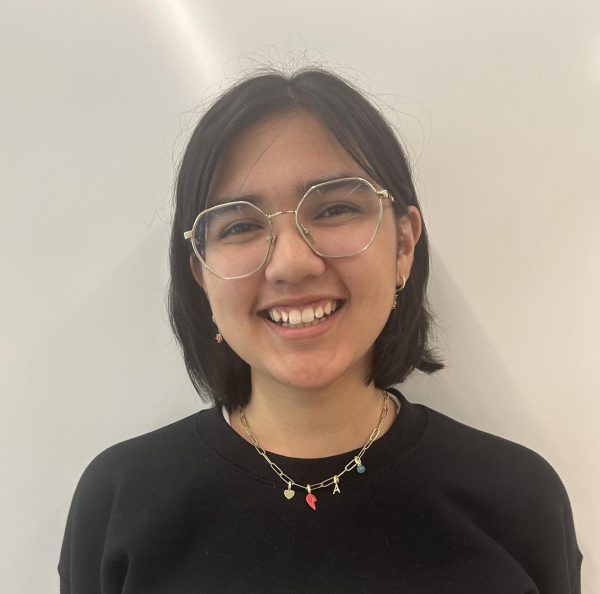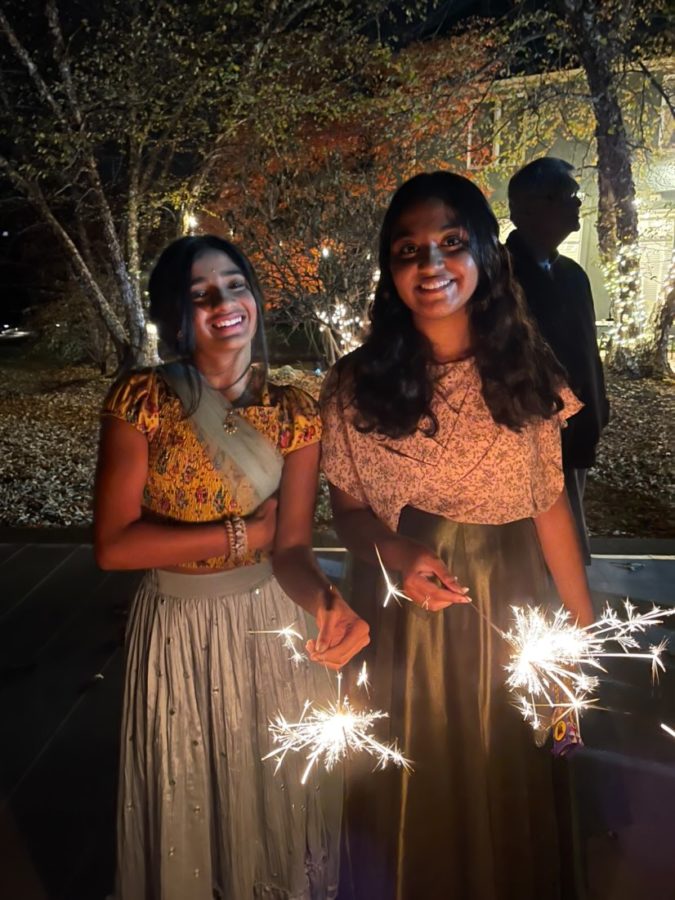Festival of Lights
Students discuss Diwali
Diwali, Dipawali, Deepavali, Deepawali, Dewali, Divali — however it’s spelled, people all over the world gather to observe Diwali in late October. More than one billion people celebrate the festival of lights, so the variations in Diwali aren’t limited to just its spelling.
In northern India, Diwali is a celebration of King Rama’s return after being exiled from his home, Ayodhya, and defeating his rival, Ravana. In southern India, it is commemorated as the day Lord Kirsha defeated the demon Naraksaura. In western India, Diwali marks when Lord Vishnu sent the demon King Bali to rule the nether world. What’s always in common? A colorful celebration of light, goodness, family, community and food.
Sophomores Vanee Pattani an d Adhvika Veerapaneni discussed their experiences with Diwali.
d Adhvika Veerapaneni discussed their experiences with Diwali.
Before the festivities have even begun, families prepare for Diwali.
“We clean our house, go to the temple and dress up in traditional clothes. We also meet up with family and friends.” Pattani said.
Diwali preparations also includes the making of rangoli inside and outside of homes to welcome prosperity into a household.
“For Diwali, we make rangoli which [is] colored chalk art that you put outside your front door,” Veerapaneni said. “It’s supposed to bring good luck to your household.”
To many families, the five day holiday of Diwali is representative of the ultimate triumph of goodness over evil.
“Light wins [against] the dark,” Pattani said. “It’s something that celebrates the good instead of the evil.”
The light in Diwali is just as literal as symbolic.
“We light a lot of candles — we do fireworks,” Pattani said. “The candles symbolize light, beauty and the ambience of Diwali that I really love.”
The love in Diwali extends to the food.
“We also make Indian food, like samosas, curries, paneer, biryani, gharelu, pulihora and poli,” Veerapaneni said. “We exchange food [with] neighbors and friends. [Food is] a lot of people’s favorite part. It’s really good.”
And even further, celebrations continue with desserts.
“My favorite food is [the] sweets — my favorites include gulab jamun or any kind of dessert that’s not too sweet,” Pattani said. “I sometimes help make them, but a lot of the ti me, I help out by eating.”
me, I help out by eating.”
Diwali creates a warm environment for families and communities to be united by putting aside work and prioritizing connections.
“It creates a cohesive, more comfortable environment for us to visit our relatives and friends — just to talk and communicate,” Pattani said. “We get together with our friends, go to the temple to pray and call our relatives back home. It allows us to spend time and celebrate together. We go to a lot of get-togethers with friends to watch fireworks.”
The connections to Diwali go further back than the present day, especially since the holiday is more than 2,500 years old.
“Knowing people who came before me celebrated [Diwali] makes me feel connected to my ancestors and my family,” Veerapaneni said.

Ashling Bahadursingh is a senior and it is her third year on staff. She likes fun socks, big earrings, classic literature, and the color green. In...




